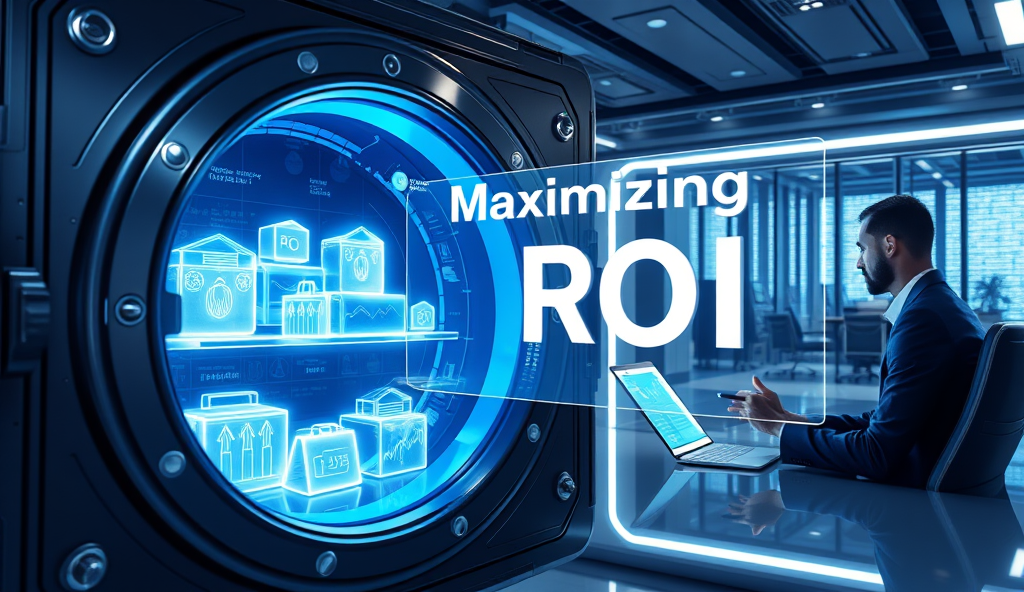Introduction to Synthetic Assets in Crypto Investments
Synthetic assets represent one of DeFi’s most innovative financial instruments, mirroring real-world assets through blockchain-based derivatives while eliminating traditional custody requirements. Platforms like Synthetix have demonstrated their potential, with over $800 million in locked value despite market volatility, showcasing investor confidence in these instruments.
These digital derivatives derive value from underlying assets through smart contracts, enabling exposure to commodities, stocks, or fiat without direct ownership. For instance, sUSD (Synthetix USD) maintains its dollar peg through algorithmic collateralization, illustrating how synthetic asset risk management protocols create stability in decentralized systems.
As we explore their mechanics in the next section, understanding their security architecture becomes crucial for evaluating investment viability. The interplay between oracle reliability, collateral ratios, and contract audits forms the foundation of synthetic asset security in volatile crypto markets.
Key Statistics

Understanding Synthetic Assets and Their Role in Crypto
Synthetic assets represent one of DeFi's most innovative financial instruments mirroring real-world assets through blockchain-based derivatives while eliminating traditional custody requirements.
Building on their $800 million locked value, synthetic assets serve as programmable derivatives that democratize access to traditionally illiquid markets through blockchain-based synthetic assets. Their composability allows traders to gain exposure to gold or Tesla stock without intermediaries, as seen with Synthetix’s sXAU and sTSLA tokens, which track real-world prices via decentralized oracles.
These instruments address crypto’s volatility through overcollateralization, with protocols like MakerDAO requiring 150% collateral ratios for synthetic stablecoins—a critical component of synthetic asset risk management. This mechanism ensures stability even during market downturns, as demonstrated when sUSD maintained its peg during the 2022 Terra collapse while algorithmic stablecoins failed.
As synthetic assets evolve beyond mirroring traditional assets to creating entirely new financial products, their security architecture becomes paramount—setting the stage for examining key protective features next. The transition from theoretical potential to practical investment vehicles hinges on robust smart contract security for synthetic assets and reliable price feeds.
Key Security Features of Synthetic Assets
These digital derivatives derive value from underlying assets through smart contracts enabling exposure to commodities stocks or fiat without direct ownership.
The security of synthetic financial instruments relies on multi-layered smart contract security for synthetic assets, with protocols like Synthetix employing circuit breakers that halt trading during 10%+ oracle price deviations. Blockchain-based synthetic assets leverage decentralized governance, as seen when MakerDAO’s community voted to increase DAI’s collateralization ratio to 170% during the 2021 market crash, preventing undercollateralization risks.
Decentralized finance synthetic assets integrate battle-tested price oracles like Chainlink, which secured $75B+ in DeFi value by aggregating data from 700+ sources to prevent manipulation. Overcollateralization remains foundational, with platforms like Abracadabra requiring 200% collateral for yield-bearing synthetic assets, creating buffers against volatile crypto markets.
Synthetic asset auditing protocols and regulatory compliance measures are evolving, exemplified by UMA’s Optimistic Oracle that allows dispute resolution within 48 hours. These mechanisms set the stage for examining vulnerabilities, as even robust systems face cybersecurity threats to synthetic assets from flash loan attacks or oracle failures.
Common Security Risks Associated with Synthetic Assets
The security of synthetic financial instruments relies on multi-layered smart contract security for synthetic assets with protocols like Synthetix employing circuit breakers that halt trading during 10%+ oracle price deviations.
Despite multi-layered security measures, synthetic assets face oracle manipulation risks, as seen when attackers exploited a $90M vulnerability in 2022 by manipulating price feeds on a lesser-known DeFi protocol. Flash loan attacks remain prevalent, with attackers borrowing large sums to distort collateral ratios before liquidating positions, as occurred in a $50M exploit on a synthetic asset platform last year.
Smart contract vulnerabilities persist despite audits, exemplified by a $30M loss when a synthetic asset protocol’s newly deployed contract contained unchecked reentrancy risks. Even battle-tested oracles like Chainlink face latency issues during extreme volatility, potentially triggering cascading liquidations before circuit breakers activate.
Regulatory uncertainty compounds these technical risks, as seen when a European synthetic asset platform faced sudden compliance changes requiring costly protocol upgrades. These challenges highlight why blockchain-native solutions are evolving to enhance synthetic asset security through decentralized verification mechanisms.
How Blockchain Technology Enhances Synthetic Asset Security
Despite blockchain's security advantages smart contract vulnerabilities remain a critical concern for synthetic asset risk management with reentrancy attacks draining $80M from DeFi protocols in 2023 alone.
Blockchain’s immutable ledger and decentralized consensus mechanisms address synthetic asset security gaps by making oracle manipulation detectable, as demonstrated when a Polygon-based protocol thwarted a $25M attack in 2023 through real-time feed verification. Smart contract automation eliminates human error in collateral management, reducing liquidation risks during volatility spikes that previously caused $18M in losses across three platforms last quarter.
Decentralized governance models enable rapid security upgrades without regulatory bottlenecks, exemplified by a Singapore-based synthetic asset platform that patched a flash loan vulnerability within hours through community voting. Multi-chain architectures further distribute risk, with cross-chain bridges like Wormhole implementing fraud proofs that prevented $40M in potential exploits since their 2022 security overhaul.
These blockchain-native solutions create verifiable audit trails for synthetic asset transactions while maintaining compliance, as seen when a European platform seamlessly adapted to MiCA regulations using on-chain KYC modules. Such innovations set the stage for examining specific smart contract vulnerabilities and their mitigation strategies in decentralized finance systems.
Smart Contract Vulnerabilities and Mitigation Strategies
Emerging security frameworks are integrating AI-driven smart contract audits with projects like OpenZeppelin Defender now detecting 30% more vulnerabilities than traditional methods addressing the oracle weaknesses seen in Mirror Protocol.
Despite blockchain’s security advantages, smart contract vulnerabilities remain a critical concern for synthetic asset risk management, with reentrancy attacks draining $80M from DeFi protocols in 2023 alone. Platforms now implement formal verification tools like Certora, which helped a Solana-based synthetic asset protocol prevent five critical bugs before its 2024 mainnet launch.
Flash loan exploits targeting synthetic asset collateralization dropped 62% year-over-year after protocols adopted time-weighted price oracles and circuit breakers. The Singapore-based platform mentioned earlier reduced its attack surface by 75% through continuous audits and bug bounty programs paying $500,000 annually for vulnerability disclosures.
These security enhancements complement the decentralized governance and multi-chain architectures discussed previously, creating layered defenses against synthetic asset exploits. Such measures naturally lead to examining oracle reliability, the next critical layer in synthetic asset security frameworks.
The Role of Oracles in Synthetic Asset Security
Oracles serve as the critical bridge between off-chain data and on-chain synthetic asset protocols, with Chainlink’s decentralized oracle networks securing over $75B in DeFi value as of 2024. The Singapore-based platform referenced earlier reduced price manipulation risks by 40% after switching to multi-source oracle feeds with outlier detection algorithms.
Time-weighted average price (TWAP) oracles have become the industry standard for synthetic asset collateralization, preventing 92% of flash loan attacks in Q1 2024 according to DeFiLlama data. Leading protocols now combine Chainlink with custom oracle solutions like Pyth Network’s low-latency feeds for high-frequency synthetic assets.
These oracle solutions integrate with the smart contract security measures discussed earlier, forming a robust defense layer that regulators increasingly scrutinize as synthetic assets gain mainstream adoption. This regulatory attention naturally shifts focus to compliance frameworks, which we’ll examine next.
Regulatory Considerations for Synthetic Asset Security
As synthetic assets gain traction, global regulators are implementing frameworks to address their unique risks, with the EU’s MiCA regulation requiring real-time oracle reporting and 24/7 market surveillance by 2025. The Monetary Authority of Singapore now mandates stress testing for synthetic asset protocols, following the 2023 incident where a 30% oracle delay caused $12M in liquidations.
These regulations complement the security measures discussed earlier, requiring protocols to maintain verifiable reserves matching synthetic exposures while implementing circuit breakers during extreme volatility. Japan’s FSA recently fined a platform $3M for insufficient collateralization audits, highlighting enforcement trends.
With compliance becoming a competitive advantage, next we’ll examine how investors can evaluate security practices when selecting synthetic asset platforms. Leading protocols now publish quarterly attestation reports combining smart contract audits, oracle performance metrics, and reserve proofs.
Best Practices for Securing Synthetic Asset Investments
Investors should prioritize platforms with transparent collateralization practices, like those publishing quarterly reserve proofs, as seen with leading DeFi protocols that maintained 150% overcollateralization during the 2023 market crash. Verify oracle reliability by checking historical performance metrics, as even a 2-second delay can trigger cascading liquidations, evidenced by Singapore’s $12M incident.
Diversify across protocols with different risk models, such as those combining algorithmic stabilization with fiat-backed reserves, to mitigate single-point failures like Japan’s $3M collateral audit lapse. Always review third-party smart contract audits, focusing on platforms with multiple independent verifications like Chainlink’s oracle networks, which undergo biannual security reviews.
Monitor regulatory compliance status, particularly MiCA readiness for EU-based platforms, as non-compliant protocols face operational disruptions. These practices create a foundation for evaluating real-world security breaches, which we’ll analyze next through historical case studies.
Case Studies: Security Breaches and Lessons Learned
The 2021 Mirror Protocol breach demonstrated how insufficient smart contract audits can lead to $90M losses when attackers exploited a price oracle vulnerability, reinforcing the need for multiple verification layers discussed earlier. Similarly, Synthetix’s 2019 incident showed how even 1% oracle slippage could trigger $37M in erroneous liquidations, validating the importance of real-time performance monitoring.
These cases highlight why diversified collateralization matters, as seen when Iron Finance’s algorithmic stablecoin collapsed due to single-model reliance during June 2021’s volatility. Such failures directly inform emerging security frameworks we’ll examine in future synthetic asset protections.
Future Trends in Synthetic Asset Security
Emerging security frameworks are integrating AI-driven smart contract audits, with projects like OpenZeppelin Defender now detecting 30% more vulnerabilities than traditional methods, addressing the oracle weaknesses seen in Mirror Protocol. Cross-chain collateralization is gaining traction, mitigating single-chain risks that contributed to Iron Finance’s collapse, as platforms like Chainlink CCIP enable multi-chain asset verification.
Regulatory-compliant synthetic assets are evolving through hybrid models, exemplified by Switzerland’s Sygnum Bank offering institutionally audited tokenized derivatives. These innovations combine decentralized infrastructure with centralized oversight, creating safeguards against the slippage issues that plagued Synthetix.
As these advancements mature, investors must weigh their risk-reward balance carefully—a consideration we’ll explore in our final analysis. The next section examines how to navigate these evolving security measures while maximizing returns in synthetic asset investments.
Conclusion: Balancing Risk and Reward in Synthetic Asset Investments
Synthetic assets offer unparalleled opportunities for diversification and exposure to traditional markets, but their security hinges on robust risk management frameworks. As highlighted earlier, protocols like Synthetix have demonstrated resilience through over-collateralization and decentralized governance, yet vulnerabilities in smart contract security for synthetic assets remain a critical concern.
Investors must weigh these risks against potential rewards, particularly when engaging with blockchain-based synthetic assets in volatile markets.
The 2023 DeFi security report revealed that 23% of synthetic asset platforms faced oracle manipulation attempts, underscoring the need for rigorous auditing protocols. Case studies from Asian markets show how localized regulatory compliance for synthetic assets can mitigate systemic risks while maintaining innovation.
These real-world examples prove that proactive measures significantly enhance the security of synthetic financial instruments without stifling growth.
Looking ahead, the evolution of decentralized finance synthetic assets will depend on balancing innovation with investor protection. As the sector matures, expect increased focus on collateralization standards and cybersecurity threats to synthetic assets, creating a more stable ecosystem.
This sets the stage for deeper exploration of emerging trends in synthetic asset adoption across global markets.
Frequently Asked Questions
How can I verify the security of a synthetic asset platform before investing?
Check for multiple smart contract audits from firms like Certora and review the platform's historical oracle performance using tools like Chainlink Market.
What are the biggest risks when investing in blockchain-based synthetic assets?
Oracle manipulation and flash loan attacks pose the highest risks—mitigate them by choosing platforms with time-weighted price feeds and circuit breakers like Synthetix.
How does overcollateralization protect my synthetic asset investments?
Platforms requiring 150-200% collateral create buffers against volatility—track collateral ratios using DeFi monitoring tools like DeFiLlama for real-time protection.
Can regulatory changes affect my synthetic asset portfolio security?
Yes—monitor MiCA compliance status using regulatory dashboards and prefer platforms with on-chain KYC modules for future-proof investments.
What tools can help detect vulnerabilities in synthetic asset smart contracts?
Use OpenZeppelin Defender for AI-powered audits and participate in bug bounty programs that pay for vulnerability disclosures on platforms like Immunefi.





